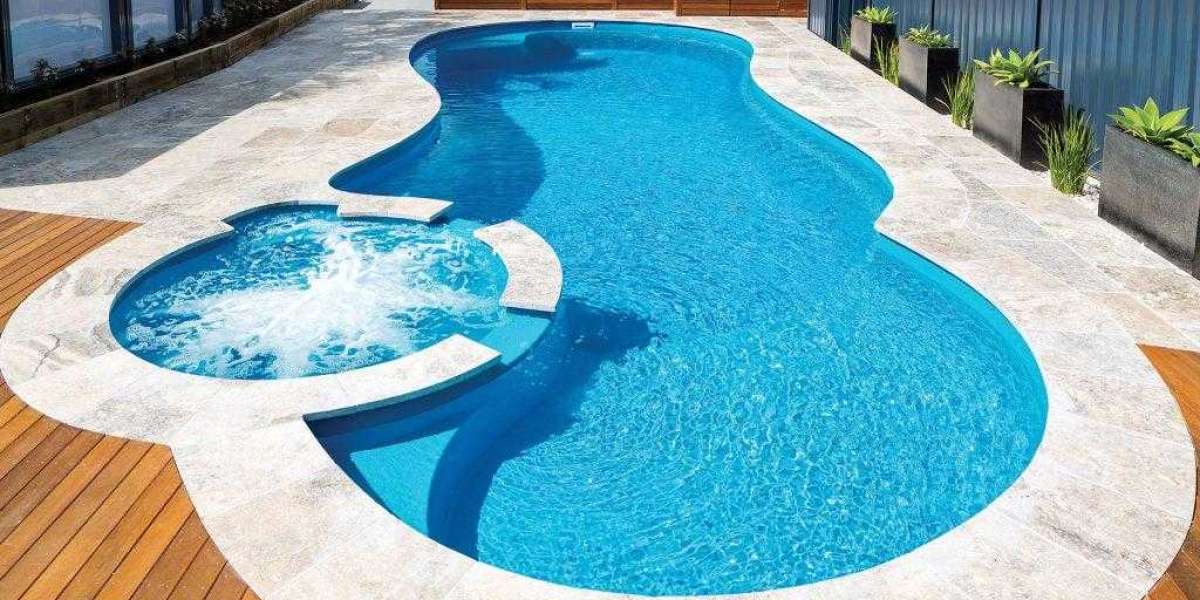Is your pool looking a bit worse for wear? Are you noticing discoloration, rough patches, or even cracks? It might be time to consider pool plaster refinishing. Keeping your pool plaster in good condition is crucial for both the aesthetics and functionality of your pool. This guide will walk you through everything you need to know about pool plaster refinishing, ensuring your pool stays in top shape for years to come.
Understanding Pool Plaster
What is Pool Plaster?
Pool plaster is a protective layer applied to the interior surface of a pool. It provides a smooth, watertight finish that not only looks great but also protects the underlying structure of the pool. Over time, however, this plaster can wear out, necessitating refinishing.
Types of Pool Plaster
Traditional White Plaster: The most common and affordable option, traditional white plaster is a mix of white cement, marble sand, and water. It's known for its classic look but requires more frequent maintenance.
Pebble Tec: This is a premium finish made from natural, smooth river pebbles. It's highly durable and provides a unique, textured look.
Quartz Plaster: Combining quartz aggregate with plaster, this type is more resistant to stains and etching, offering a longer lifespan than traditional plaster.
Polished Pool Finishes: These finishes include polished marble or granite, providing a stunning, smooth surface that's highly durable and visually appealing.
Signs Your Pool Needs Refinishing
Discoloration: If your pool plaster has lost its original color and looks dingy, it's a sign that it needs refinishing.
Rough Texture: A smooth pool surface is essential for comfort and safety. If the plaster feels rough or abrasive, it’s time for a refinish.
Stains and Etching: Persistent stains and etchings caused by chemical imbalances can mar the appearance of your pool.
Cracks and Leaks: Structural issues such as cracks and leaks are serious indicators that your pool plaster needs attention.
Benefits of Pool Plaster Refinishing
Enhanced Aesthetics: Refinishing your pool plaster gives it a fresh, new look, making your pool a more attractive focal point in your backyard.
Improved Safety: A smooth, clean surface prevents injuries and makes your pool safer for swimmers.
Increased Durability: New plaster provides a stronger, more resilient surface that can withstand years of use.
Cost-Effectiveness: Regular refinishing can prevent more expensive repairs down the line, saving you money in the long run.
Choosing the Right Pool Plaster Finish
Factors to Consider
Budget: Your budget will largely determine which type of plaster finish you can afford. Traditional plaster is less expensive, while options like Pebble Tec and quartz are pricier.
Desired Look: The aesthetic you want for your pool will also influence your choice. Do you prefer a classic white look, or something more unique and textured?
Longevity: Consider how long you want the finish to last. While traditional plaster requires more frequent maintenance, options like quartz and polished finishes offer longer durability.
Popular Options
White Plaster: Ideal for those looking for a clean, classic look on a budget.
Colored Plaster: Adds a touch of personality and can complement your backyard décor.
Aggregate Finishes: These finishes, such as Pebble Tec and Beadcrete, provide a unique, textured look and superior durability.
Preparation for Pool Plaster Refinishing
Draining the Pool: The first step in refinishing your pool is to drain the water. This allows for a thorough inspection and cleaning of the surface.
Removing the Old Plaster: The existing plaster is chipped away to create a clean slate for the new application.
Surface Cleaning and Repair: Any cracks or damage to the underlying structure are repaired, and the surface is cleaned to ensure proper adhesion of the new plaster.
The Pool Plaster Refinishing Process
Applying the Bond Coat: A bond coat is applied to help the new plaster adhere to the pool surface.
Plaster Application: The new plaster is mixed and applied to the pool surface, usually in multiple layers to ensure durability and a smooth finish.
Troweling for a Smooth Finish: Skilled workers trowel the plaster to create a smooth, even surface.
Curing and Filling the Pool: After the plaster is applied, the pool is slowly refilled with water. Proper curing is essential to ensure the longevity of the new plaster.
Post-Refinishing Maintenance
Initial Care and Curing: The first few weeks after refinishing are critical. Follow your contractor’s guidelines for curing, which may include brushing the plaster and balancing the water chemistry.
Balancing Pool Chemistry: Maintain proper chemical levels to prevent stains and etching. Regular testing and adjustments are necessary.
Regular Cleaning and Inspection: Keep your pool clean and inspect the plaster regularly for any signs of wear or damage.
Common Mistakes to Avoid
Ignoring Water Chemistry: Failing to maintain balanced water chemistry can lead to stains and damage.
Skipping Professional Help: While DIY refinishing can save money, it often results in subpar results and can be more costly in the long run.
Inadequate Surface Preparation: Proper surface preparation is key to ensuring the new plaster adheres correctly and lasts longer.
Conclusion
Refinishing your pool plaster is an essential task that can significantly enhance the appearance, safety, and durability of your pool. By understanding the signs that your pool needs refinishing, choosing the right type of plaster, and following proper maintenance practices, you can ensure your pool remains a beautiful and enjoyable part of your home for years to come.







